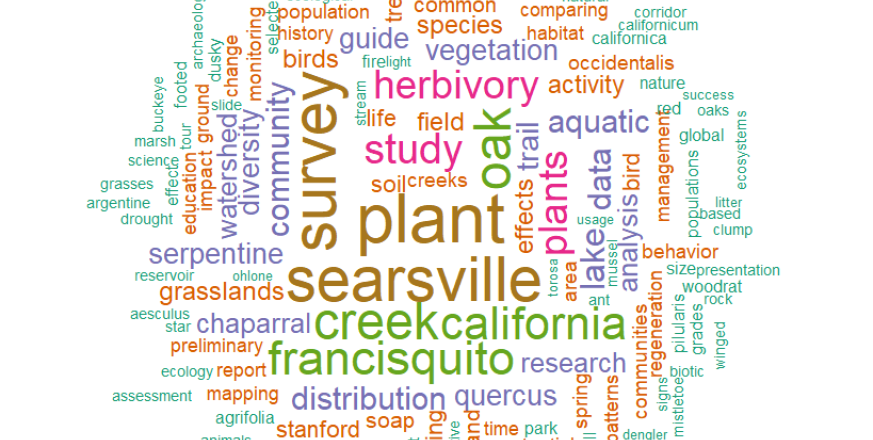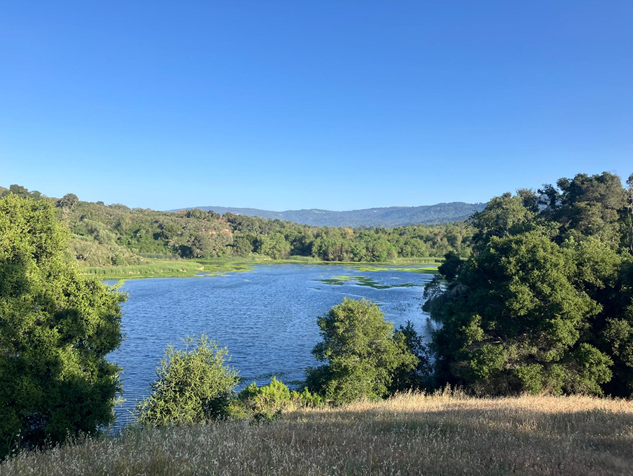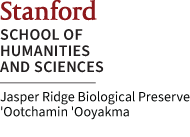Student project feature from the latest BIO/EARTHSYS 105 cohort

We're in the midst of preparing another iteration of the field course "Ecology and Natural History of Jasper Ridge," now in its 50th year. In just a few weeks, we'll be seeing new docents-to-be creating community as they spend Thursday afternoons at the preserve. We'll come to know the unique expertise they bring to their learning and scholarship, and can't wait to meet them all and see what excites them for their original projects.
This past spring, we reflected on all of the projects that have been done over years of course offerings. We compiled and summarized the body of work that students had contributed, described in the blog post "Fifty Years of Student-Driven Research at Jasper Ridge Biological Preserve ('Ootchamin 'Ooyakma)." Textual analysis allowed us to develop the above word cloud, and see which topics excited students' interest over the years. We also developed a directory of course alumni that is accessible to all affiliates. Our 2024 class was excited to see the "beta" directory last March, and know that they would be a part of it with their scholarship.
As the 2024 cohort finished their projects and approached graduation, I began asking permission on project-sharing to bring them into the fold of our new directory. We found that a few students were motivated to have their projects shared more widely, beyond the intended affiliate audience for our new directory. This led to the idea of a public blog feature with links to share and download student work. We hope you enjoy the variety of work, disciplines, methods, and media that students created.
1. Lessons Learned from 1,600 Ticks by Derek Knowles
2. "Meditation on Pedagogy: (Un)Translating Jasper Ridge" by AJ Naddaff
3. "Food as Medicine at Jasper Ridge" by Pearl Shing-Roth, Isabella Cruz-Krahn, Tina Truong
Lessons Learned from 1,600 Ticks
[Click to view original data]
by Derek Knowles

Figure 1. The abundance and species identity of ticks picked up by volunteers on cycling patrols throughout the preserve in spring 2024. Image created by Derek Knowles.
Derek conceived this research project to survey the abundance and species identity of ticks at Jasper Ridge. He identified three common species of ticks - the Pacific Coast tick (Dermacentor occidentalis), the American dog tick (Dermacentor variabilis), and the western blacklegged tick (Ixodes pacificus). Two types of survey data were collected. One was from volunteers (Larisa Fong, Marta Cortinovis, and Brooke Fabricant) conducting cycling patrols on the preserve, and the other from a dedicated walking patrol that attempted to identify all ticks along the trail.
Derek and his team of volunteers found that the most popular tick hiding spots were in shady areas on vegetation that hangs over the trail. The Western Blacklegged ticks (ones that carry Lyme disease) were most common in the riparian woodland along Trail 1, and the Pacific Coast tick was the most dominant species in the chaparral and grassland (Fig. 1). What's the best recommendation after insights from ~1,600 ticks? Derek recommends wearing long pants tucked into socks and checking for ticks after touching vegetation as the core prevention methods to help you leave the preserve without any tick bites!
"Meditation on Pedagogy: (Un)Translating Jasper Ridge"
[Click to view the accompanying slideshow]
by AJ Naddaff

Figure 2. View of Searsville Reservoir, looking south in May 2024. Photo by María Gloria Robalino Ceped.
AJ is a Comparative Literature Ph.D. candidate, and brought a unique perspective to his work and interaction with visitors on tours. Using the premise that our role as Jasper Ridge docents call upon us to translate scientific research findings to visitors, he invites us to also practice "untranslating." In other words, how can we lead from a place of morality and collective care in addition to the outputs of Western scientific research?
This framework is timely, as we now formally recognize the Chochenyo translation of the preserve, 'Ootchamin 'Ooyakma, and support more tours on the theme of wellness. AJ's words and presentation resonated deeply with Jasper Ridge leadership. Rodolfo Dirzo, lead Professor for BIO/ESYS 105 shared, "I submerged myself in the delight of reading a masterful articulation from a scholar of literature, reflecting on Jasper Ridge and our role as educators via tour guides." Faculty Director Tad Fukami added, "I, too, enjoyed reading this piece. I appreciate that AJ incorporated some of the thoughts he and I chat about one day, on being multilingual and how that can shape the way we look at nature. AJ expresses these thoughts much more nicely than I could have."
"Food as Medicine at Jasper Ridge"
by Pearl Shing-Roth, Isabella Cruz-Krahn, Tina Truong

Figure 3. Part of a recipe card for Yerba Santa (Eriodictyon sp.) Ice Cream, one of ten botanical recipes that are part of Pearl, Isabella, and Tina's interactive StoryMap.
Pearl, Tina, and Isabella each brought their own interests and strengths when they created this beautifully written and designed StoryMap. An interactive map highlights select plants that we know to be important constituents of the oak woodland, riparian, and chaparral ecosystems found at Jasper Ridge. Yet how can we know them better through the lens of medicine and food?
Here, Isabella, Tina, and Pearl encourage you to consider what we know about these native plants through multiple lenses, including their research on medicinal properties and potential for culinary use (see example Fig. 3). This project is based on the students' interpretation of what they learned from the literature about Indigenous knowledge and practices. The StoryMap invites the reader to imagine a multi-sensory experience the next time they encounter these plants. (Please note, however, that the harvest of plants for food and medicinal purposes are currently not permitted at Jasper Ridge.)
By Katie Glover, Ph.D.
 Katie is the Associate Director for Environmental Education at Jasper Ridge Biological Preserve ('Ootchamin 'Ooyakma). Read more about Katie here.
Katie is the Associate Director for Environmental Education at Jasper Ridge Biological Preserve ('Ootchamin 'Ooyakma). Read more about Katie here.


